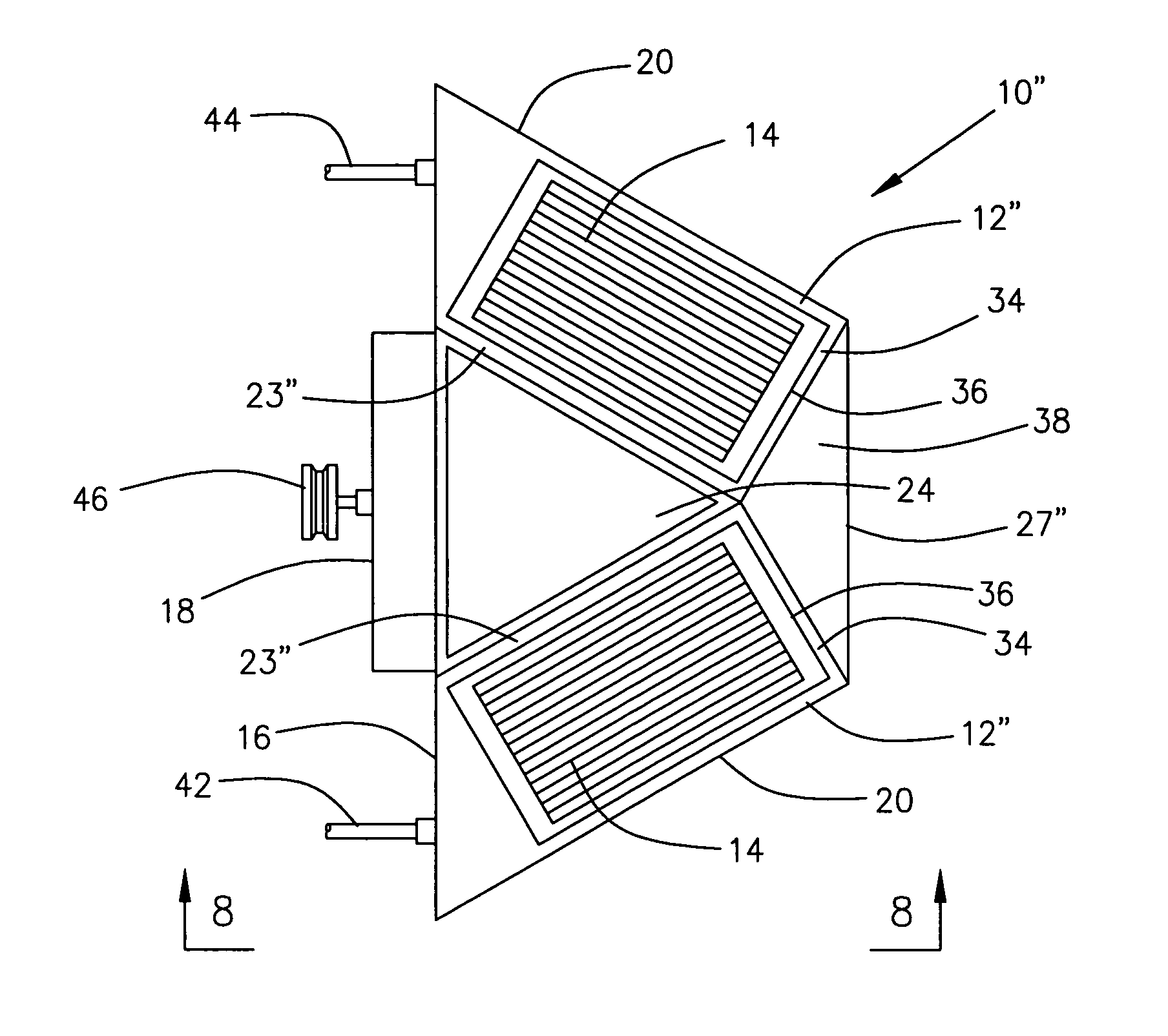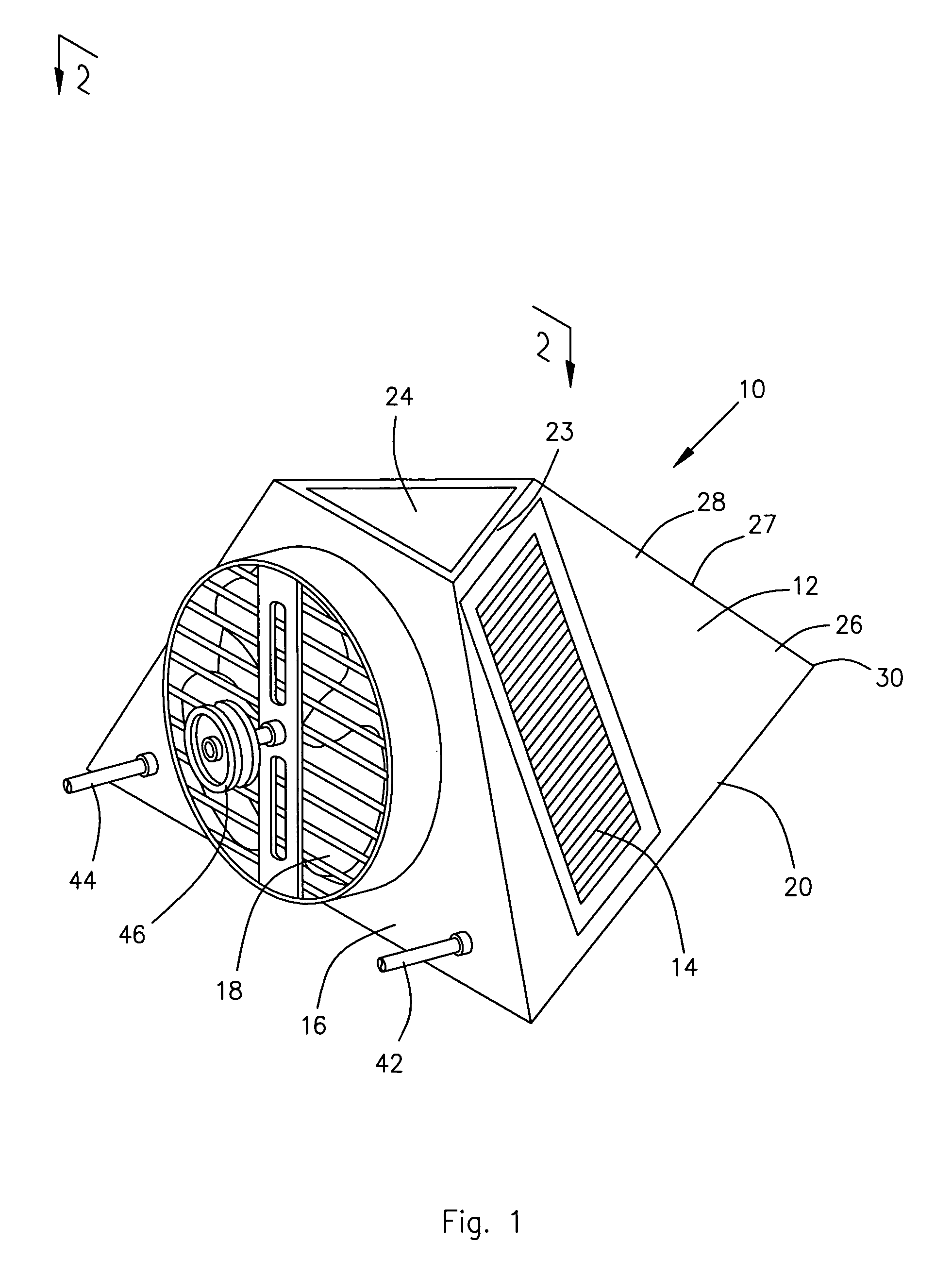Triangular shaped heat exchanger
a heat exchanger and triangular technology, applied in the direction of domestic stoves or ranges, stationary conduit assemblies, lighting and heating apparatus, etc., can solve the problems of reducing the efficiency reducing the amount of air that passes directly through the coil, and inefficient orientation, so as to reduce the number of heat exchangers, and reduce the size of the heat exchanger
- Summary
- Abstract
- Description
- Claims
- Application Information
AI Technical Summary
Benefits of technology
Problems solved by technology
Method used
Image
Examples
Embodiment Construction
The Invention
[0032]Referring now to the Figures and initially to FIGS. 1-6, there is illustrated a triangular shaped heat exchanger 10 constructed in accordance with a preferred embodiment of the present invention. The heat exchanger 10 shown in these figures has two heat exchanger walls 12 containing heat exchanger coils 14, with the walls 12 oriented at double or compound angles, angles A and B, with respect to a plane 16 in which its associated heat exchanger fan 18 is located. The plane 16 in which the heat exchanger fan 18 is located is represented in the drawings by the rear wall 16 of the heat exchanger 10 on which the fan 18 is mounted to the heat exchanger 10.
[0033]A bottom edge 20 of each heat exchanger coil wall 12 is secured to a triangular shaped base 22 and a top edge 23 of each heat exchanger coil wall 12 is secured to a triangular shaped top 24. Together the rear wall 16 and its associated fan 18, the base 22, the top 24, and the two walls 12 cooperate to define an i...
PUM
 Login to View More
Login to View More Abstract
Description
Claims
Application Information
 Login to View More
Login to View More - R&D
- Intellectual Property
- Life Sciences
- Materials
- Tech Scout
- Unparalleled Data Quality
- Higher Quality Content
- 60% Fewer Hallucinations
Browse by: Latest US Patents, China's latest patents, Technical Efficacy Thesaurus, Application Domain, Technology Topic, Popular Technical Reports.
© 2025 PatSnap. All rights reserved.Legal|Privacy policy|Modern Slavery Act Transparency Statement|Sitemap|About US| Contact US: help@patsnap.com



